Laundry day. It’s the day we all dread, but with the help of a trusty washing machine, it doesn’t have to be a daunting task. This household appliance has become a lifesaver for busy individuals and families, allowing us to keep our clothes clean and fresh without the hassle of hand-washing.
The history of washing machines is a fascinating one, dating back to the early 1800s when the first machines appeared. These primitive models were hand-powered and made of cast iron, making them extremely heavy and difficult to use. Can you imagine having to manually turn a crank to wash your clothes? Thank goodness for advancements in technology!
Fast forward to 1908 when the first electric washing machine was introduced, revolutionizing the way we do laundry. With the simple push of a button, laundry could be washed quickly and efficiently, freeing up valuable time for other tasks. Since then, washing machines have continued to evolve and improve, becoming more energy-efficient and user-friendly.
Today’s washing machines come in a variety of styles, from the classic top-loading model to the more modern front-loading design. Some even have smart features, allowing you to control and monitor your laundry from your smartphone. It’s amazing how far this humble household appliance has come.
Benefits of a Washing Machine
Doing laundry is a chore that few people enjoy. It can be time-consuming, tiring, and downright tedious. But thanks to the invention of the washing machine, this once arduous task has become much easier and more convenient. In fact, the washing machine has revolutionized the way we clean our clothes, and it’s hard to imagine life without one.
Not only do washing machines save you time and effort, but they also get your clothes cleaner than you could ever manage by hand. No more scrubbing and wringing out clothes until your arms ache. With just the push of a button, your clothes are gently and thoroughly cleaned in no time.
But the benefits of washing machines don’t stop there. They also come equipped with built-in dryers that can leave your clothes smelling fresh and clean, without any of that musty odor that can come from hanging clothes outside to dry. This means you can have clean, dry clothes ready to wear in just a fraction of the time it would take to do it all by hand.
Perhaps one of the biggest benefits of washing machines is their convenience. You can simply load up the machine with your dirty laundry and then go about your day while it does all the work for you. This is especially helpful for those with large families or a lot of laundry to do. And with newer models incorporating smart features, like Wi-Fi connectivity and remote control, doing laundry has never been so easy.
Types of Washing Machines
When it comes to washing machines, there are two main types – fully automatic and semi-automatic. If you’re wondering what exactly these terms mean and what the difference between them is, then you’ve come to the right place.
Fully automatic washing machines are the most popular type, and for good reason. They are incredibly easy to use, with no need for any manual intervention. Simply load up the machine with your laundry, add detergent, and select a cycle. The machine will then take care of the rest, from filling with water to spinning the clothes dry. To learn more about fully automatic washing machines, check out this informative blog post on what is fully automatic washing machine.
On the other hand, semi-automatic washing machines require a bit more effort on your part. While they still automate many aspects of the washing process, you will need to transfer the clothes from the washing tub to the drying tub once the cycle is complete. Despite this extra step, semi-automatic washing machines are still a far cry from the manual labor of hand-washing clothes. Check out this blog post on what is semi automatic washing machine to learn more about them.
But what is the actual difference between fully automatic and semi-automatic washing machines? There are a few key factors that set these two types apart, from ease of use to cost. To find out more about the differences between the two, check out this helpful blog post on difference between fully automatic and semi automatic washing machine.
Another important consideration when it comes to washing machines is whether to opt for a top load or front load model. Both have their pros and cons, from cost to efficiency. To learn more about the differences between the two, check out this informative blog post on top load vs front load washing machine.
Lastly, if you’re short on space or looking for a washing machine that you can easily move around, then you may want to consider a portable washing machine. But how do these models stack up against regular washing machines in terms of features and performance? Find out in this informative blog post on portable washing machine vs regular washing machine.
How Does a Washing Machine Work
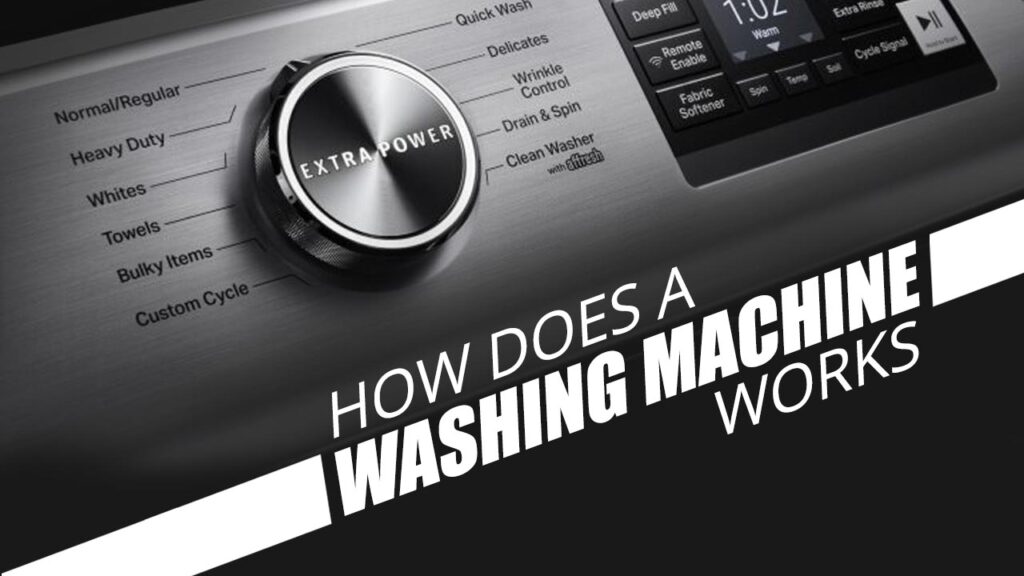
From the early days of doing laundry by hand, washing machines have come a long way. With today’s high-tech features, washing machines have revolutionized the way we clean our clothes. But have you ever wondered how a washing machine actually works?
Let’s break it down. Most washing machines have four main components: a motor, a transmission, an agitator, and a tub. The motor powers the transmission, which then turns the agitator. The agitator moves the clothes around in the water to clean them, while the tub holds the water and clothes, and spins to remove the water from the clothes at the end of the cycle.
For a more in-depth look at how washing machines work, check out this informative blog post on how washing machine works. It breaks down the details of the motor, transmission, agitator, and tub, as well as explain how water enters the washing machine through a fill valve, and how the clothes are rinsed and dried at the end of the cycle.
But what about portable washing machines? How do they work? If you’re curious, you’ll want to read this blog post on how does a portable washing machine work. They explain that portable washing machines work on the same basic principles as traditional washing machines, but with a few key differences. Portable washing machines are smaller and designed for portability, making them a great option for those living in apartments or traveling.
Whether you’re interested in learning about traditional washing machines or portable ones, Prowashingmachine.com has you covered with their informative blog posts. So, next time you’re doing laundry, you’ll have a better understanding of how your washing machine is getting the job done.
Washing Machine Buying Guide
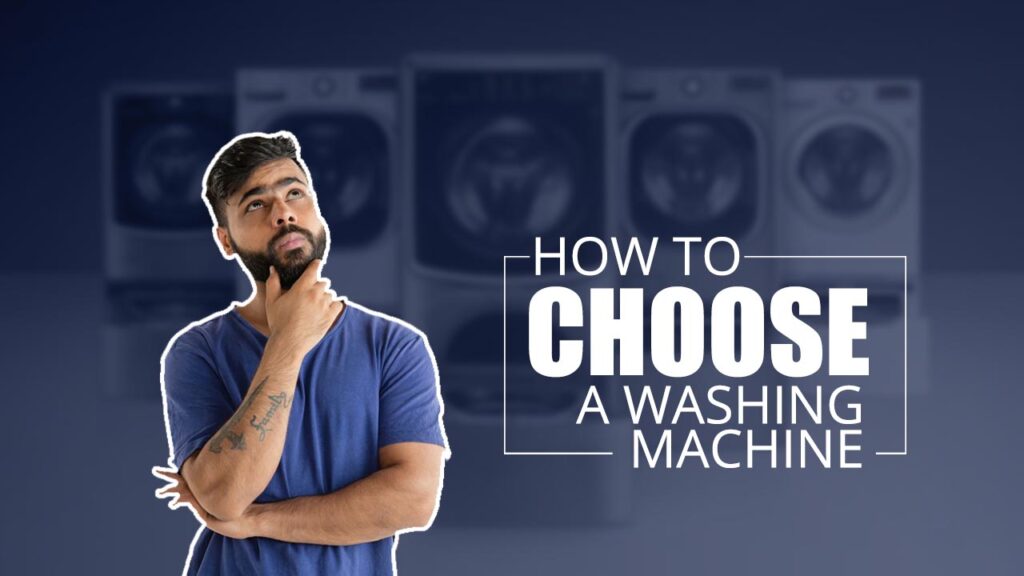
When it comes to choosing a washing machine, there are many factors to consider. The first step is to decide what type of machine you need. Once you know whether you want a full-automatic, semi-automatic or portable washing machine, consider the following factors.
- Capacity: The size of the washing machine aka washing machine capacity is an important factor to consider when making your purchase. Washing machines come in a variety of sizes, so you need to consider how much laundry you typically have to wash. A larger capacity machine may be more expensive, but it will save you time in the long run.
- Features: When choosing a washing machine, you should consider the features that are important to you. Some machines come with special features, such as steam cleaning or sanitising cycles. These can be helpful if you have specific needs.
- Energy efficiency: If you are concerned about saving energy, you should look for an energy-efficient washing machine. These machines use less water and electricity, which can save you money on your utility bills. For more detailed info, read this article on power consumption by washing machine.
- Spin cycle: The spin cycle is important for getting your clothes dry quickly. A higher spin speed means less time in the dryer.
- Water consumption: Washing machines use a lot of water, so it’s important to choose one that is efficient. Portable washing machines may use less water than full-sized models. To know more, read this article on how much water does a washing machine use.
- Technologies: Some washing machines come with special technologies that can save you time and money. For example, some machines have sensors that automatically adjust the wash cycle based on the size of the load. This can save you water and energy. Our article on latest technology in washing machine explains all innovative technologies in detail.
- Wash programs: The washing machine you choose should have the wash programs you need. For example, if you frequently wash delicate clothing, you should look for a machine with a delicate cycle. If you have kids at home , you may want a machine with a quick wash cycle. For a more thorough guide, refer to this article about washing machine programs.
- Price: Finally, you need to consider your budget when choosing a washing machine. There are a variety of options available, so you should be able to find one that fits your needs and budget.
How to Install a Washing Machine
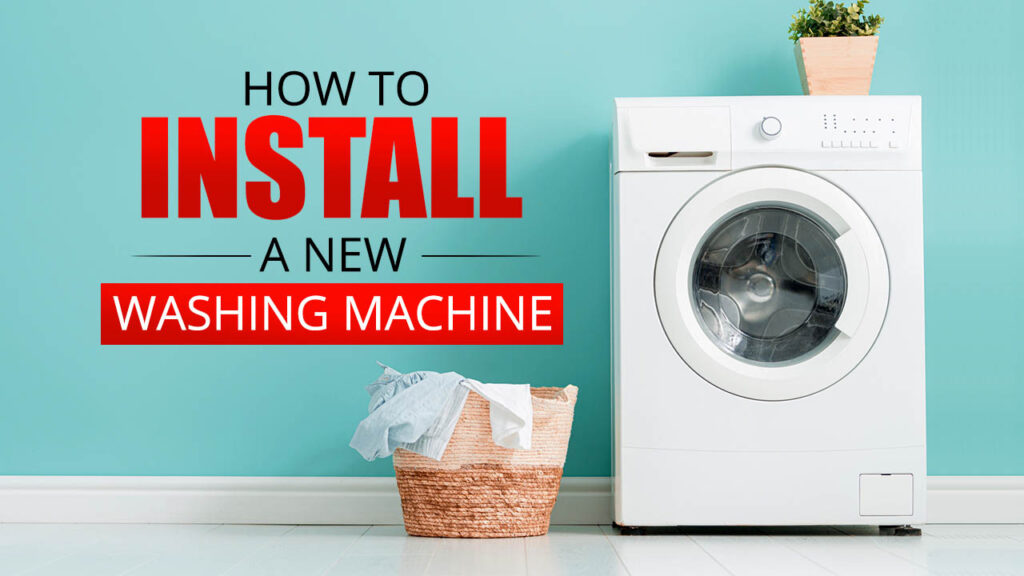
Installing a washing machine can be a daunting task, but with our step by step guide, you can get it done in no time! Whether you’re moving into a new home or just need to replace your old washing machine, our guide will walk you through everything you need to know.
Tools You’ll Need:
- Adjustable wrench
- Philips head screwdriver
- Leveler
- Tape measure
- Drain hose (included with your washing machine)
- Water supply hoses (included with your washing machine)
Step One: Preparing the Area
Start by clearing out some space in your laundry room. You’ll need about two feet of space on all sides of the washing machine for proper ventilation. Once you’ve cleared some space, use the leveler to make sure the area is level. If the area isn’t level, use shims to level it out.
Step Two: Installing the Drain Hose
Next, you’ll need to install the drain hose. Start by attaching one end of the hose to the drainage outlet on your washing machine. Once the hose is attached, put the other end into your home’s drainage system. If you don’t have an existing drainage system, you can create one by drilling a hole in your laundry room floor and installing a drainage pipe. Make sure that the drain hose is fitted snugly so that there are no leaks.
Step Three: Connecting the Water Supply Hoses
Now it’s time to connect the water supply hoses to your washing machine. There are usually two hoses—one for hot water and one for cold water. Make sure that you connect each hose to the corresponding inlet on your washing machine. Once both hoses are connected, turn on both valves so that water can start flowing into your washing machine.
Step Four: Putting It All Together
Now it’s time to plug in your washing machine and give it a test run! Be sure to follow all manufacturer instructions when turning on and using your washing machine for the first time. With our guide, installing a washing machine is easy peasy! Just follow these simple steps and you’ll have it up and running in no time.
That’s it! By following these simple steps, you can easily install a brand new washing machine all by yourself! No need to call an expensive technician or waste any time at all—our guide on how to install a new washing machine makes it easy.
How to Use a Washing Machine
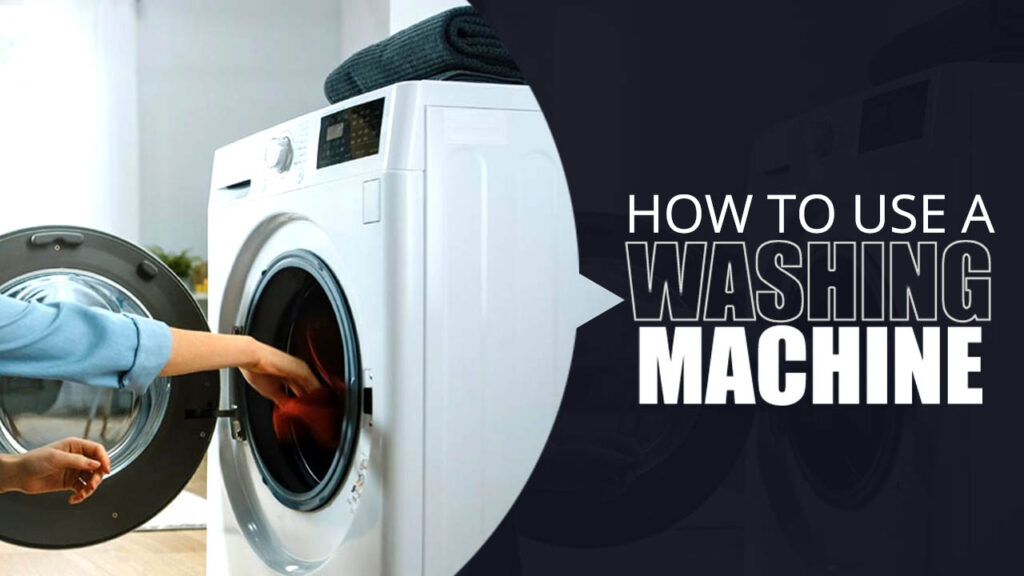
A washing machine is an appliance most commonly found in the homes of westerners. But with the increasing globalisation, more and more Indian homes are now opting for this appliance. Washing machines come with numerous features and wash programs, making it all the more confusing for a first-time user. Below, we will give you a step-by-step guide on how to use a washing machine, specifically designed keeping in mind an Indian home.
- Step 1: Check the manual that came with your washing machine. All washing machines are different and have their own set of instructions. It is important that you read and understand these instructions before proceeding. If you have misplaced the manual, do not worry. You can easily find it online on the website of the respective company.
- Step 2: Once you have read and understood the manual, it is time to gather your laundry. Separate your clothes into two piles – one for whites and one for coloured clothes. This is an important step because mixing up your clothes can lead to colour bleeding and ruin your clothes.
- Step 3: Before putting your clothes into the washing machine, it is advisable to pre-treat any stubborn stains. There are a number of commercial stain removers available in the market which can be very effective in removing tough stains. You can also make a DIY stain remover at home using household ingredients like baking soda, lemon juice, etc.
- Step 4: Now it is time to load your washing machine. Start by adding your clothes into the tub. Once all your clothes are in, close the lid of the washer gently.
- Step 5: The next step is to select the right cycle for your load of laundry. Most modern washing machines come with a variety of options like ‘normal’, ‘delicate’, ‘heavy duty’, etc. Choose the cycle keeping in mind the type and amount of laundry you have put in as well as the fabric of your clothes. For example, if you are washing a delicate garment like silk, you would want to select the delicate cycle.
- Step 6: The final step is to add detergent into the dispenser compartment and then start your machine by pressing the ‘start’ button. Once your wash cycle is complete, take out your clothes and hang them up to dry or transfer them to a dryer if you have one.
And there you have it! A step-by-step guide on how to use a washing machine for Indian homes. Wasn’t that easy? Now that you know how to use this appliance, make sure you follow all the steps correctly so that your clothes stay as good as new for a long time.
Washing Machine Cleaning and Maintenance
Maintaining a spotless washing machine is essential for its longevity and for preventing the spread of germs and bacteria. With our hectic lives, it’s all too easy to neglect washing machine care. That’s why we’ve compiled a list of valuable tips to help you maintain your appliance in tip-top condition.
First and foremost, remember to clean your washing machine regularly. At least once a month, combine one cup of white vinegar with one cup of water and run a standard cycle using hot water. This simple yet effective method eliminates any accumulated detergent, fabric softener, or dirt residues.
For those with a front-loading washing machine, pay special attention to the door seal and gasket, as these areas are prime breeding grounds for mold and mildew. To clean the door seal, wipe it with a cloth soaked in white vinegar or a bleach solution. For the gasket, a toothbrush might be necessary to access all the nooks and crannies. Once a month, run an empty cycle with hot water and two cups of bleach for thorough disinfection.
Using a {descaling agent} can also significantly improve your washing machine’s efficiency by removing hard water deposits. Simply run an empty hot water cycle and add half a cup of descaling agent to the detergent dispenser.
To prevent rusting and conserve energy, always empty and unplug your washing machine after each use. This practice ensures the heating element doesn’t work overtime to heat up a full load of water every time you turn it on.
By following these tips, you’ll be well on your way to maintaining a clean and efficient washing machine. If you’re looking for more detailed guidance, check out the following articles:
- How to clean top load washing machine
- How to clean your front loading washing machine
- How to clean washing machine drum
Washing Machine Errors
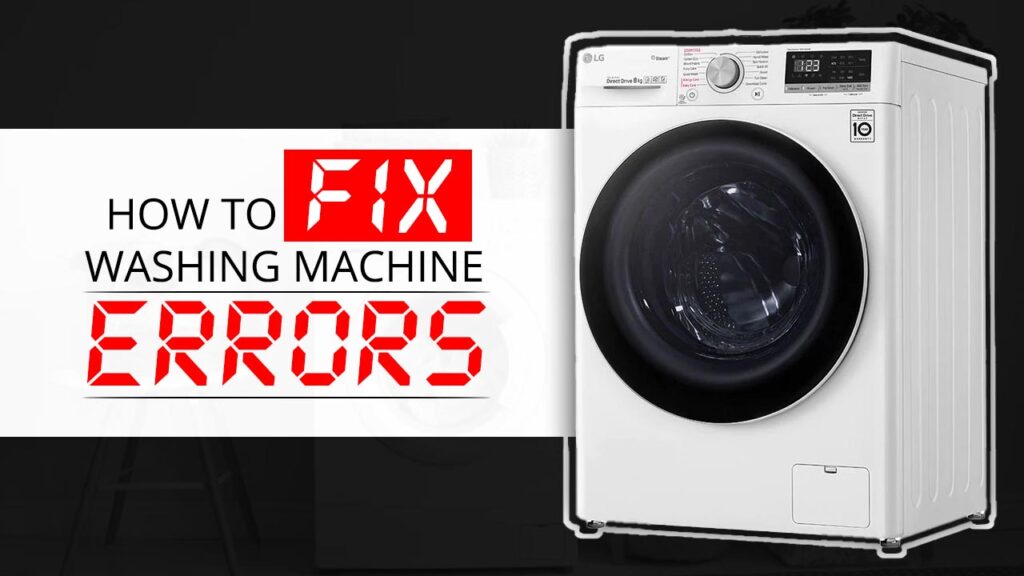
Washing machines have become more and more complex in recent years, and as a result, they are now equipped with a variety of error codes that can help to diagnose problems. While these codes can be helpful, they can also be confusing for many people. If you see an error code on your washing machine, the first thing you should do is consult the owner’s manual.
This will help you to identify the meaning of the code and determine the best course of action. In some cases, you may be able to resolve the issue yourself. However, in other cases, it may be necessary to call a repair technician. Either way, it is important to pay attention to error codes so that you can keep your washing machine running smoothly.
For in-depth brand specific guides, take a look at our following troubleshooting guides.
- How to fix washing machine errors
- LG washing machine error codes
- Whirlpool washing machine error codes
- Haier washing machine error codes
- Bosch washing machine error codes
- Samsung washing machine error codes
- IFB washing machine error codes
Washing Machine Troubleshooting
Washing machines are an essential part of our lives, and we rely on them to keep our clothes clean. However, they can sometimes develop problems that can be tricky to solve. Below, we will look at some common washing machine problems and how to solve them.
Washing machine is not spinning
If your washing machine is not spinning, the first thing you should check is the door switch. The door switch is a safety device that prevents the washing machine from spinning when the door is open. If the door switch is defective, it will not allow the washing machine to spin. Another possible cause of a washing machine not spinning is a faulty lid switch. The lid switch is located inside the washing machine and prevents the washing machine from spinning when the lid is open. If the lid switch is defective, it will need to be replaced. Finally, a clogged drain pump can also prevent a washing machine from spinning. If your washing machine has a clogged drain pump, it will need to be cleaned or replaced.
Washing machine is leaking water
If your washing machine is leaking water, there are several potential causes. First, check to see if the water supply hoses are loose. If the hoses are loose, they will need to be tightened. Another possible cause of a washing machine leaking water is a defective water inlet valve. The water inlet valve supplies water to the washing machine and if it is defective, it will need to be replaced. Finally, a cracked tub can also cause a washing machine to leak water. If your washing machine has a cracked tub, it will need to be replaced.
Washing machine does not fill with water
If your washing machine does not fill with water, the first thing you should check is the water supply hoses. If the hoses are kinked or broken, they will need to be replaced. Another possible cause of a washing machine not filling with water is a defective float switch. The float switch prevents too much water from entering the washer and if it is defective, it will need to be replaced. Finally, a clogged inlet screen can also prevent the machine from filling with water. If your washer has a clogged inlet screen, it will need to be cleaned or replaced.
Washing machine will not drain
If your washer will not drain, there are several potential causes. First check to see if the drain hose is kinked or bent. If the hose is kinked or bent, it will need to be replaced. Another possible cause of a washer not draining properly is a clogged drain pump filter. The filter prevents foreign objects from clogging up the drain pump and if it becomes clogged; it will need to be cleaned or replace. Finally, a defective drainage tube can also prevent the machine from draining properly.
Washing machine dryer not working
If you’re experiencing difficulty with your washing machine’s drying function, you’re not alone. A malfunctioning dryer can be frustrating, but there are steps you can take to troubleshoot the issue. The first thing to check is the lint filter, which should be cleaned after every use to prevent buildup. If that doesn’t work, you might try adjusting the load size, as an overloaded machine may struggle to dry clothes completely. You may also want to check the venting system and make sure it’s clear of any debris. If these tips don’t solve the problem, it’s possible that your dryer’s heating element or thermostat may need to be replaced. Contact a professional repair service to avoid further damage to your machine. With a bit of investigation and patience, you can get your dryer back up and running in no time.
Frequently Asked Questions About Washing Machines
If you’re in the market for a new washing machine, you may be wondering about all of the different features and options available. Or, you may have some questions about how to use your current machine properly. Here are some of the most common questions we hear from our customers about washing machines. We hope this information helps make your decision easier!
- What is pre wash in washing machine
- What is spin in washing machine
- What is rinse in washing machine
- What is air dry in washing machine
- What is inverter washing machine
- Where to put detergent in washing machine
- How to drain water from washing machine
- How to dry clothes in washing machine
- How to correctly do laundry
- How to wash shoes in washing machine
- Is a portable washing machine right for you
- What is IFB washing machine warranty program called